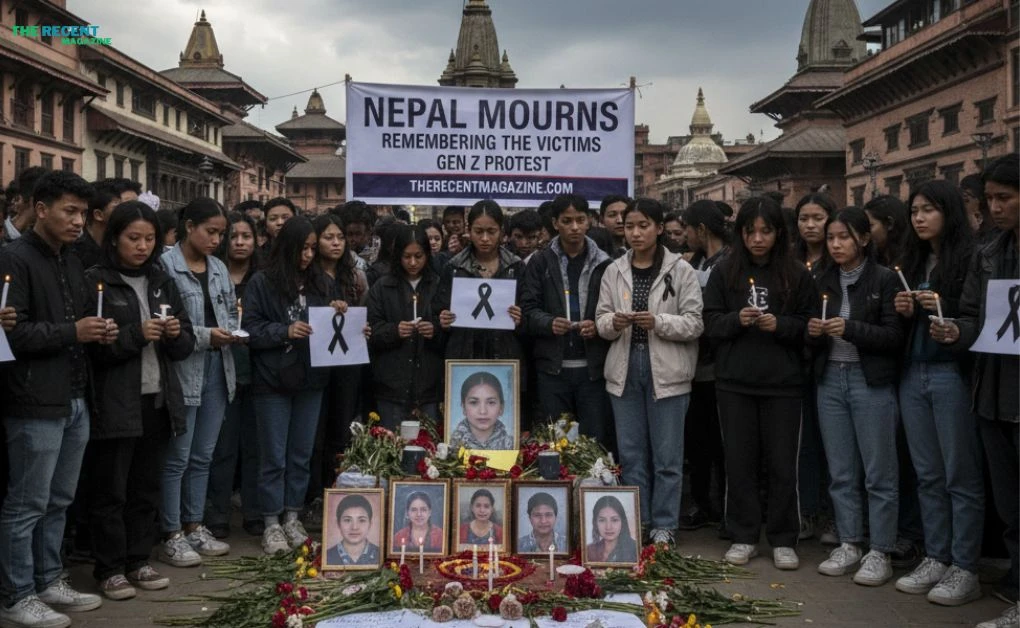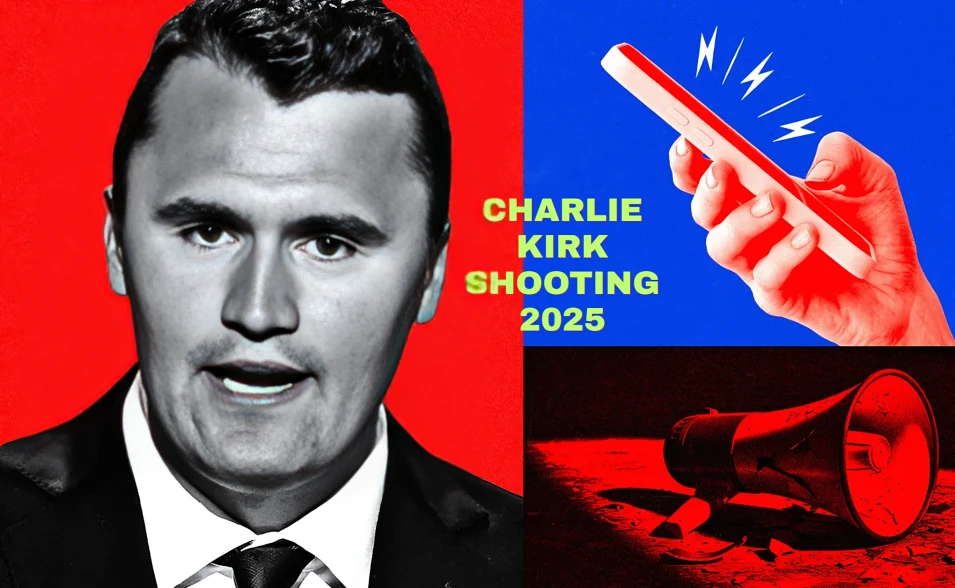Now Reading: Nepal Mourns: Remembering the Victims of the Gen Z Protest
-
01
Nepal Mourns: Remembering the Victims of the Gen Z Protest
Nepal Mourns: Remembering the Victims of the Gen Z Protest

Nepal mourns the victims of the Gen Z protest 2025 with national mourning, state funerals, and calls for justice. Here’s how the country remembers its martyrs.
On September 8, 2025, Nepal woke up to one of the darkest days in its modern history. What began as a peaceful demonstration led by young people, the so-called Gen Z protest in Nepal, turned into a national tragedy. The youth had taken to the streets to demand jobs, transparency, and above all, freedom after the government abruptly banned popular social media platforms. But what should have been a democratic expression of frustration ended in bloodshed.
By nightfall, at least 72 lives were lost, more than 2,100 people were injured, and hundreds were behind bars. Families who had sent their children to protest returned home with silence, grief, and pictures of loved ones wrapped in the national flag.
In the weeks that followed, Nepal mourned together. The victims were officially declared martyrs, the government organized a national day of mourning, and candlelight vigils lit up cities and villages across the country. The Nepal Gen Z victims became more than names on a list-they became symbols of a generation demanding to be heard.
Why the Gen Z Protest Erupted
The spark for the Gen Z uprising in Nepal came from a sudden government decision: a social media ban. For many, this may seem small, but for young Nepalis, it cut deep. Social media wasn’t just entertainment-it was their voice, their community, and in many cases, their livelihood.
But the ban was only the tipping point. Beneath it lay years of frustration:
- Sky-high youth unemployment left graduates with few prospects.
- Corruption within political elites eroded public trust.
- Limited opportunities in education and entrepreneurship crushed ambition.
- A growing sense of disillusionment with democracy made young voters feel invisible.
It wasn’t just about Facebook or TikTok. It was about dignity, freedom, and the right to shape their own future.
A Nation in Grief
The protests escalated quickly. Tear gas, batons, and bullets replaced dialogue. Protesters threw stones, built barricades, and in some areas, fires burned. By the end, dozens of families were in mourning.
Funerals became scenes of both sorrow and solidarity. In Kathmandu, Pokhara, Janakpur, and countless rural towns, thousands gathered to honor the fallen. Mothers clutched photographs, fathers carried coffins draped in the national flag, and entire communities stood shoulder to shoulder, chanting for justice.
These young lives, cut short, became the faces of the Nepal Gen Z protest victims.
National Mourning and the State’s Response
On September 17, 2025, Nepal observed a Day of National Mourning. Schools and businesses closed. Flags across the nation flew at half-mast. For a moment, the country stood still.
The government officially declared the dead as martyrs, a recognition that placed them alongside those who died for Nepal’s democracy in the past. Some were honored with state funerals, where coffins draped in flags were carried with guards of honor. Priests at Pashupatinath Temple performed the last rites, while leaders bowed their heads in respect.
Families were offered relief packages:
- NPR 1 million in compensation.
- Funeral expenses are covered by the state.
- Free lifelong medical care for the injured.
- Scholarships for children of the deceased.
But for many families, no amount of money could heal their loss. What they wanted was accountability-justice, not just compensation.
Remembering Through Memory and Memorials
One of the most powerful responses was the plan for a Gen Z Memorial Park, also called the Awakening Memorial Park, to be built in Kathmandu. It will stand as:
- A place for families to grieve and remember.
- A historical marker of the 2025 uprising.
- A reminder to future leaders of the dangers of corruption and authoritarianism.
In the meantime, ordinary people created their own memorials. Candlelight vigils spread across Nepal, from Bouddhanath Stupa to the lakeside of Pokhara. Butter lamps flickered as prayers rose into the night sky. For many young Nepalis, these vigils weren’t just about mourning. They were about solidarity, about saying: we will not be silenced.
Political Aftermath: Change at the Top
The Nepal Gen Z protest 2025 did not end with funerals. The outrage forced political change. Prime Minister KP Sharma Oli, under immense public and internal pressure, resigned. His departure was seen as a victory for the movement, proof that youth power could topple even the most entrenched leadership.
An interim government was formed under Sushila Karki, Nepal’s first female prime minister. Her job: stabilize the nation, support victims, and prepare for new elections in March 2026.
She promised reforms-an investigation into the killings, anti-corruption drives, and youth employment programs. Whether these promises will survive political gamesmanship remains to be seen. But one thing is clear: the pressure for reform is stronger than ever.
Global Reactions and Human Rights Concerns
The crackdown drew international attention. Human rights groups, including Amnesty International and Human Rights Watch, condemned the excessive use of force and called for accountability. They demanded:
- Transparent investigations into the deaths.
- Punishment for those responsible for violence.
- Guarantees of freedom of speech and protest in Nepal.
For many abroad, the Gen Z uprising in Nepal highlighted the fragile balance between democracy and authoritarianism in a digital age.
Lessons From the Gen Z Protest in Nepal. Gen Z Protest
The protests left painful scars, but also important lessons:
- Youth cannot be ignored. With more than half of Nepal’s population under 30, sidelining them is politically impossible.
- Social media is political power. The ban proved just how vital online platforms are for democracy and dissent.
- Corruption has consequences. The anger that exploded was fueled by decades of political dishonesty.
- Mourning is resistance. Vigils, funerals, and memorials became not just about grief, but about reaffirming the right to protest.
Conclusion: The Martyrs of September 2025
As Nepal mourns the victims of the Gen Z protest, the nation stands at a crossroads. The young people killed were not just victims – they were catalysts for change. They reminded the nation that democracy is not inherited but defended, sometimes at painful cost.
From the National Day of Mourning to the upcoming Gen Z Memorial Park, Nepal is carving its memory into its history. The challenge now is for its leaders: Will they honor this sacrifice with real reform, or will it be swept away by another political cycle? The martyrs of September 2025 will forever remind Nepal that the future belongs to its young people – and their voices, whether on the streets or online, cannot be silenced.
You can also read relevant article Breaking: Nepal Parliament Set on Fire






















